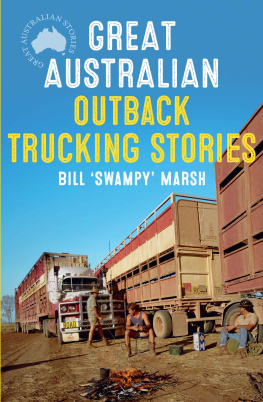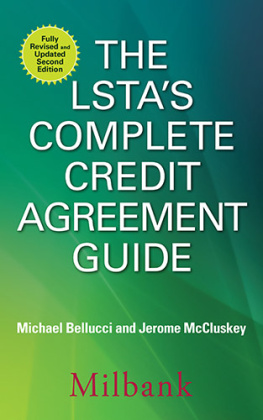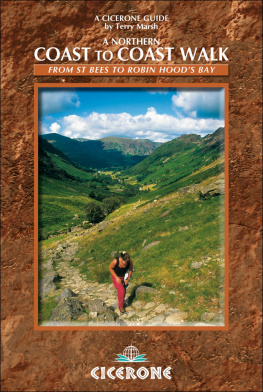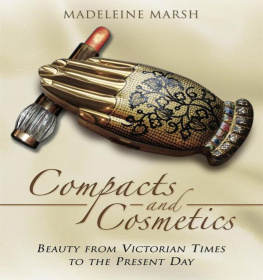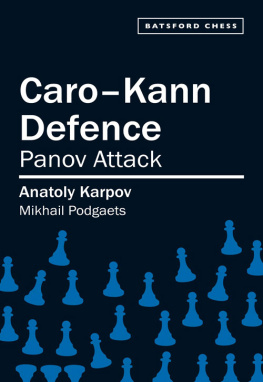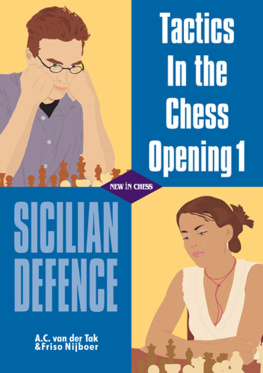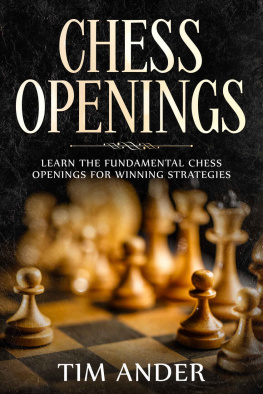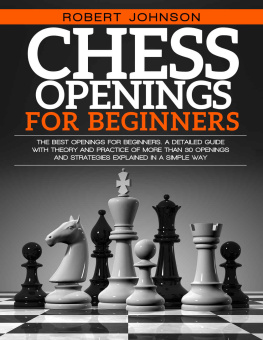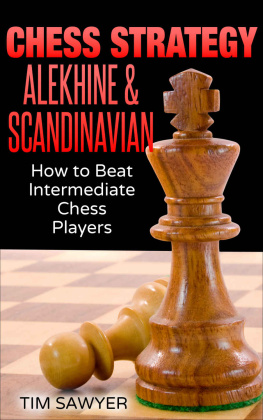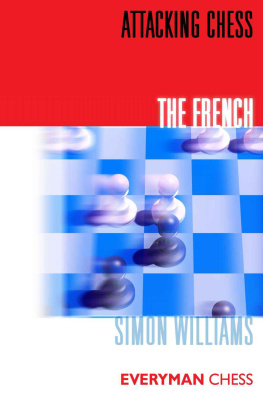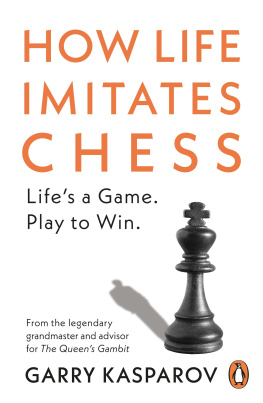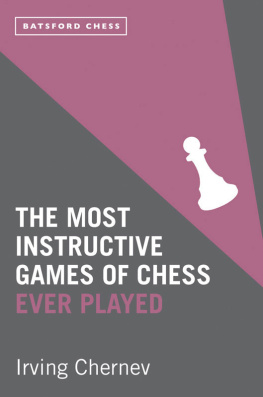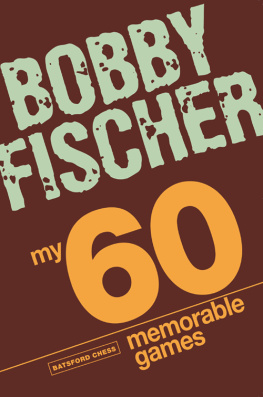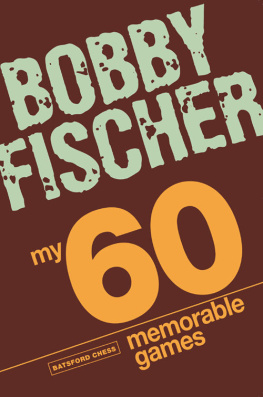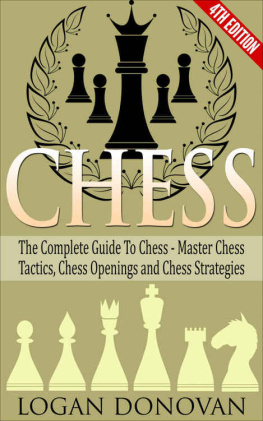

CONTENTS
REMEMBERING BOB WADE
The original
Batsford Book of Chess was written by International Master Robert G. Wade OBE (1921-2008) and first published in 1974, as
Playing Chess. Revised editions, with the new title, appeared in 1984 and 1991. It was a very popular book which appealed to novices and more experienced players alike. This new edition is aimed at a similar readership, offering a sweeping coverage of chess and chess players, from learning the moves to appreciating the games of the World Champions. Bob was a strong player, winning the championships of New Zealand three times (1944, 1945 and 1948) and Great Britain (1952 and 1970).
He earned the title of International Master in 1958 and represented both New Zealand and England at international level. He was an excellent author but better known for his key editorial role in making B.T. Batsford the worlds top chess publisher in the late 1960s and 1970s. In this capacity, his great knowledge and experience was supported by his huge library of chess books and magazines. Moreover, he generously gave his time to tutor and advise a countless number of chess players, both young and old, and even helped the legendary Bobby Fischer to prepare for his titanic World Championship match against Boris Spassky in 1972. In 1979 he was awarded the OBE for his enormous contributions to British chess.
When Bob died there was no shortage of glowing tributes from players of all ages and levels of chess ability, from top Grandmasters to parents of junior players. I would now like to share some memories of my own meetings with Bob. We first met in 1988, at the very start of my career in teaching chess in schools. Bob came to Teesside to deliver a coaching course and I spent as much time as possible grilling him about his experiences with Viktor Korchnoi, Bobby Fischer and other giants of the chess world. He was very willing to share his stories but there was a certain reluctance to go into detail about his dealings with Fischer. Bob expressed great praise for my coaching skills, telling me I would easily go on to become a top national coach.
Needless to say, such words of encouragement served as a big confidence booster to me and sum up how inspirational and generous Bob could be. We met again at the press conference for the 1989 London Candidates Matches (eliminators for the World Championship) featuring Jonathan Speelman vs. Jan Timman and Anatoly Karpov vs. Artur Yusupov. Clearly sensing I was a little overawed at being in such exalted company, Bob made a point of introducing me to as many famous Grandmasters as possible. Afterwards he took me on a mini-tour of chess-related London locations, including various specialist book shops and the Batsford offices.
Intrigued by the extent of his famous collection of chess literature, I asked him how many chess books he actually owned and he said he had no idea at all and that counting them would be a retrograde step anyway. He came out of one bookshop with a couple of volumes on Go and mentioned in passing that his collection of books on that game was very large too. As we walked the streets of London, I quizzed him further about his contact with Fischer. He was undoubtedly still in touch with the 11th World Champion but had to be a little careful how much he said. He did tell me that when Fischer needed him, contact was made in a roundabout sort of way and that there had been plans for Fischer and Spassky to play a match in South Africa, an unexpected choice of venue. However, the plans had fallen through (this was still three years before Fischer emerged from his chess exile to play the 1992 World Championship rematch).
We met a few more times after that, always in London. I remember travelling by tube with him on the way back from one of the Kasparov vs. Kramnik World Championship match games in 2000. He pulled some chess magazines from the pockets of his coat and showed me some striking examples of three-piece attacks, which he said juniors found particularly difficult to carry out in their own games. Our final encounter was at the 2008 Staunton Memorial tournament. Not surprisingly, at 87(!) years of age, he was very tired after one of his losses and Im not sure he even recognised me at first.
Nevertheless, he recovered his spirits quickly and we chatted about his experiences of playing against far younger players. I had written to him shortly before his death to invite him to take part in my series of interviews for CHESS Magazine. I was confidently awaiting a positive response when the news of his death suddenly appeared online. At the next Staunton Memorial tournament, in 2009, I was present at the Bob Wade Memorial Evening, which featured a witty, moving and memorable tribute by none other than Viktor Korchnoi. The remarkable array of chess players present on that evening, including numerous Grandmasters, further emphasized how much of an influence Bob had on the growth of British chess and how much appreciation there was for his unstinting services to the great game. I sincerely hope this brand new version of The Batsford Book of Chess will help aspiring chess players improve their skills and enhance their appreciation of the great game.
I hope also that Bob, wherever he may be, will approve of my attempt to keep the spirit of his fine work alive. Sean Marsh
January 2014
INTRODUCTION
Chess is an easy game to learn but a difficult one to master. Virtually anyone in the world can learn the basic moves in a matter of minutes and, unlike the majority of sports and games, it provides the opportunity for juniors to battle on equal terms with adults. It is a universal game that can be played anywhere at any time even on a small travel set or a mobile phone. Millions of people play chess via the Internet every day, against opponents from all over the world, and it doesnt require a stadium or football pitch, just an 8x8 checkered board and 32 chess pieces.
2) After a little practice, to encourage new players to return to the book and move on to more challenging work, such as the study of tactics, positional play and the principles of chess openings.
3) To introduce a number of chess heroes and examples of their skilful play.
3) To introduce a number of chess heroes and examples of their skilful play.
Hopefully, these instructive games will whet the appetites of readers, who will then be inspired to look at other masterpieces and develop a lasting interest in the history and culture of chess. 4) To encourage independent work by means of test yourself puzzles. So turn the page and step inside the wonderful world of chess
THE BASICS
Chess Notation
A permanent record of chess moves can be made either on a hard copy scoresheet or a computer database. This enables you to replay your own games as well as those of Grandmasters and World Champions, past and present, from which you can learn the art of tactics and strategy. We use the coordinates of the chess board to record the moves and thereby document games for future reference. The method is exactly the same as for the game of Battleships and for reading maps.
Each piece on the board is represented by a letter, apart from the pawns which dont need one. K for king Q for queen R for rook B for bishop N for knight (to avoid confusion with K for king) Various symbols are used for special moves.
Next page

